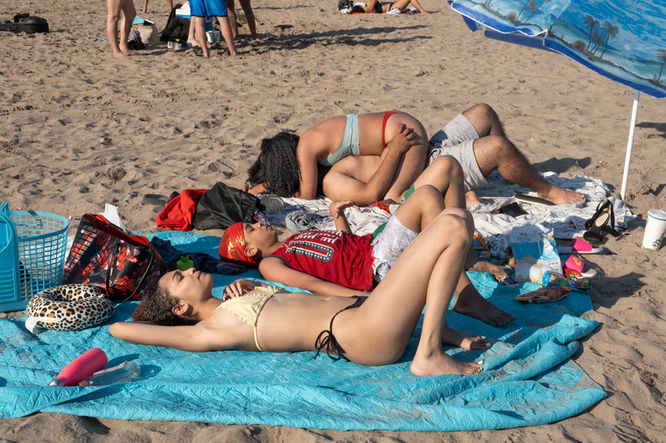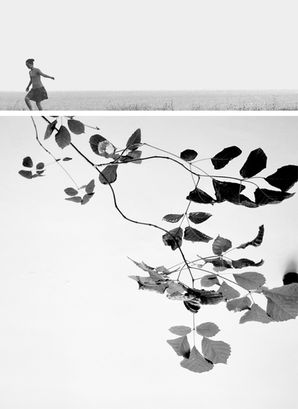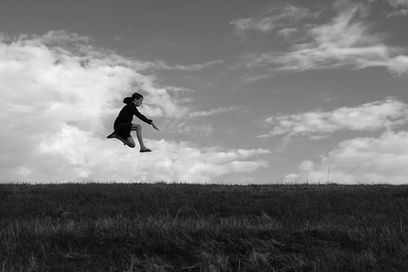
STREET THEATRE
August 17, 2020
INTERVIEW
PHOTOGRAPHY Alexandra Avlonitis
INTERVIEW Melanie Meggs
In the ever-changing world of art, there are innovators determined to push boundaries and explore new forms of creativity. Alexandra Avlonitis is one such artist who, after years of dedicating herself to fine art painting, decided to try something new. In 2015, she embarked on an unexpected journey to the world of photography, using her skills in color, light, and composition to create stunning art.
As a native New Yorker, Alexandra was instantly drawn to the genre of street photography, captivated by the lively energy of the city and its various cultures. She was determined to capture the drama of public life that was unfolding before her eyes. Abandoning her paint brush in favor of a camera, she has since dedicated herself to mastering the art of photography. Whether inside the studio or out, the artistic tool box was the same. As a native New Yorker, the genre of street photography was such a natural fit for her. She will always be captivated by the hum and buzz of the street, the energy of unremitting commerce, the mash-up of peoples and different cultures.
This interview explores Alexandra Avlonitis' unconventional journey from painting to photography, as well as her approach to capturing the exciting energy of the city streets. Readers will gain insight into how she was able to use her existing artistic knowledge to create beautiful and unique photographs, highlighting her incredible talent for capturing moments and creating art.

“I am not a landscape photographer or a portrait photographer. I am a street photographer. Moreover, I live in the crush of humanity that is NYC. If I want to make strong and compelling work I have to put myself out there - physically and creatively. I have to overcome my timidity daily, go forth with confidence and get close.”
IN CONVERSATION WITH ALEXANDRA AVLONITIS
THE PICTORIAL LIST: Alexandra please tell us about yourself. You once were a fine art painter...what was that moment/s that made you transition to street photography? Do you still paint?
AA: After years of painting, I found myself experiencing a creative block. A friend told me about a photography class she was taking at the International Center of Photography here in NYC. I had been photographing with my cell phone for some time, often while traveling, and thought it was time to learn how to use a proper camera. So I put the paint brush down five years ago and took my first class at ICP.
Photography allowed me to integrate my knowledge of color, light and composition in a whole new medium. I have not painted since. Not that I don’t miss it sometimes, but for me, this new endeavor demands full concentration and practice.
TPL: Where do you find your inspiration?
AA: I am drawn to urban settings with a mash-up of people and cultures. Vibrant light and color, the essential elements of painting, set the stage.
TPL: What do you want to express through your photography? What are some of the elements you always try to include in your photographs?
AA: Essential in my photography is the human element captured in quotidian scenes: finding that which connects all of us on some fundamental level.
TPL: Your photographs have this beautiful candid intimacy about them. Often you are focusing very closely on the subjects. What is your process when you are out shooting on the street?
AA: Like most street photographers I try to be unobtrusive on the street. As a petite woman I find I have an advantage that allows me to blend in, often unnoticed. And while I try to fill the frame with the action on the street, I am often drawn to particular individuals. If, at the moment I take a candid photograph, eye contact is made, all the better. I feel it brings emotional depth to the image. (Once, in a workshop, a famous street photographer said that if eye contact is made with the subject, it is not a valid street photo. I humbly beg to differ.)
TPL: Who are your favourite artists and photographers?
AA: The classic street photographers top my list: Garry Winogrand, Helen Levitt, Vivian Maier, Joel Meyerowitz, Alex Webb and others. And with my painting background I am forever dazzled by Saul Leiter’s colors, layers, and composition.
Photography has one leg in painting and one leg in life, but the two things must be combined. - Brassai

TPL: Do you prefer to shoot alone or with friends?
AA: I enjoy the company of my photography compatriots but most often I prefer to shoot alone.
TPL: Where is your favourite place to shoot?
AA: I am fortunate to live in NYC, a great street photography city. When traveling I seek out similarly dense and lively spaces. A recent trip to northern India was especially intoxicating: a street photographer’s paradise.
TPL: Has your style of shooting changed since you first started?
AA: When I started out, my ICP instructor advised that I try a 16mm (24mm equivalent) lens which would force me to get close to my subjects; and it did indeed. Over time, though, I gravitated to the more traditional 23mm (35mm equivalent) lens. But in this era of the global pandemic, in order to keep a safe distance (sadly) from my subjects, I have used a 18-55mm (27-84mm equivalent) lens. Playing around with that has been fun. Will see where I land when life is back to normal.
TPL: What are some of your goals as an artist? Where do you see yourself or hope to see yourself in five years?
AA: Since photography is a fairly recent pursuit for me, I feel like I’ve got so much yet to do: study the work of preeminent photographers from the past and present, work at my craft, and do good work that finds a place in the world.
TPL: “When I am not out photographing, I (like to)...
AA: Hard to say. As a photographer you are always photographing. With or without a camera you are seeing, composing, and snapping away. If only in your head."

As Alexandra's passion for street photography continues to grow, so does her impressive portfolio of work. The captivating energy of the city and its people is brilliantly displayed in her photographs, allowing us to connect with the world around us in a new and exciting way. Her imaginative artistry brings the hustle and bustle of city life to life, providing us with a unique view of the world we live in. To see more of Alexandra's fantastic street photography use the links below and be inspired.



































